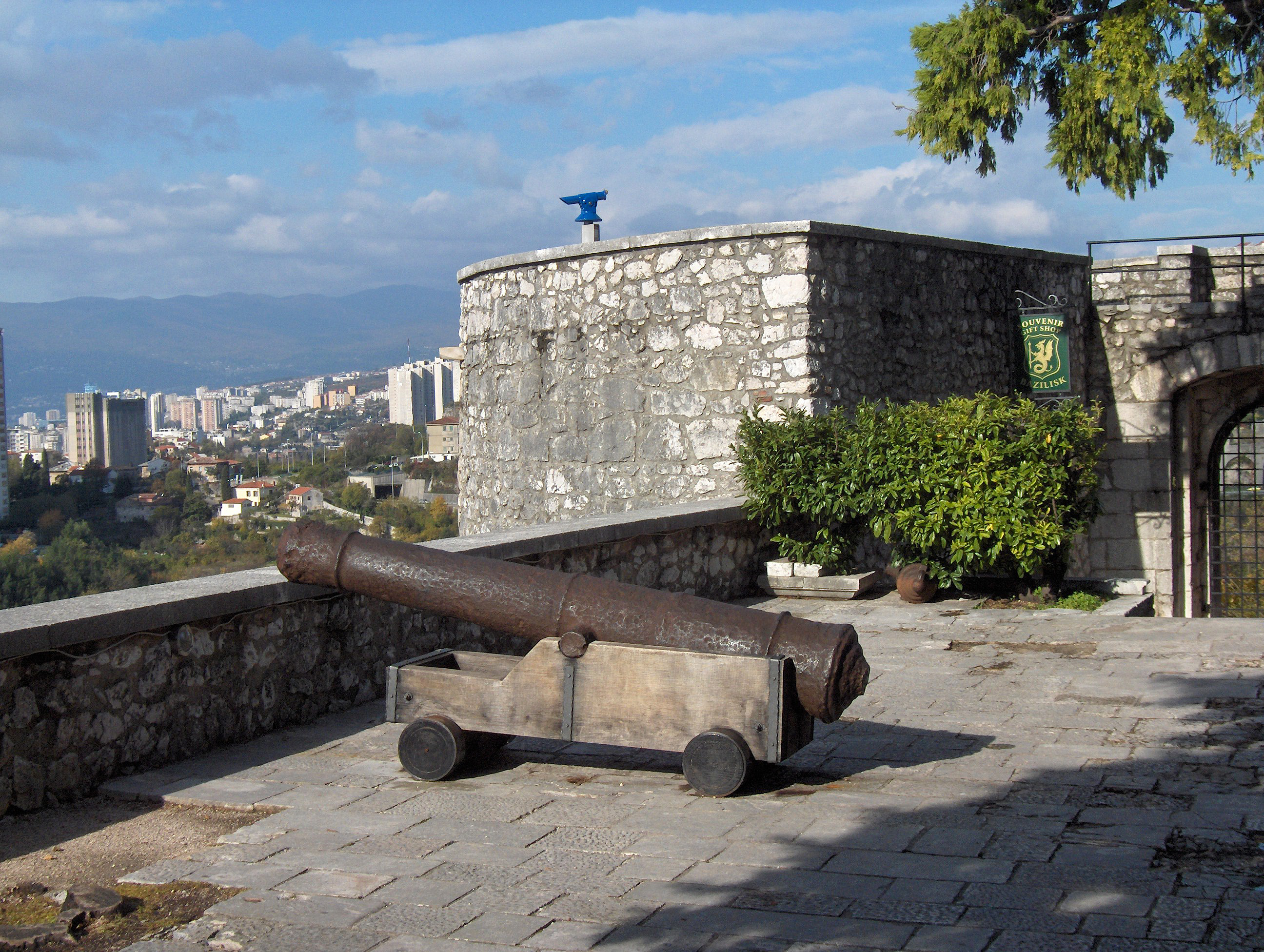| Trsat Castle Gradina Trsat |
|
|---|---|
| Rijeka Croatia |
|
 Trsat Castle |
|
| Type | Castle |
| Construction materials |
Stone |
Trsat Castle (Croatian: Gradina Trsat) is a castle in Trsat, Croatia. It is thought that the castle lies at the exact spot of an ancient Illyrian and Roman fortress. The Croatian noble Vuk Krsto Frankopan is buried in one of the churches. The Trsat castle was completely reconstructed and renovated in the 19th century when the mausoleum of the military commander Laval Nugent was built in its interior. The courtyard of the castle has now been turned into a restaurant and many tourists visit the place during the summer months.
Contents |
History [link]
The thirteenth century Trsat castle, whose site has been in use from Roman days for being an easy place from which to control access to the sea along the River Rijeka, is situated on the steep hill overlooking the Rječina gorge on its left bank, just above the town of Rijeka. It may be that a Iapodian hill-fort, Darsata, used to be there, after which the Roman fortification Tarsatica was named. This Roman fort was of vital importance on a road that connected Aquileia to Pannonia and Senia (Senj). It was owned by Frankopan family who built the present castle, on the site occupied by the Illirian Tarsatica, to protect their holdings in Vinodol.[1]
The capture of the Castle of Trsat compelled the Ban of Croatia, Andrew Bot of Bajna (Bajna is a village in Hungary, near Esztergom)), to intervene in the Austro-Venetian war, and in June 1509 he first recaptured Trsat with his Croatian army and then entered Rijeka after expelling the Venetians. In October 1509, the Venetians withdrew for good and Rijeka returned to the possessions of Maximilian of Habsburg. This notable episode is the sole event which links Rijeka with Venice, and consequently with Italy, during the whole of its history from the 7th century on.[2]
In the 17th century the castle fell into decay due to the receding threats from Venice and the Ottoman Empire. Its decline was accelerated by the earthquake of 1750. In the year 1811, during the Napoleonic wars, Captain Hoste in pursuit of the French, arrived with his frigate at Fiume where he made himself lieutenant-governor. The situation in Trieste soon drew him away, but in 1826 he had the satisfaction of handing the castle over to Field-Marshal Nugent, an Irishman then commanding the Austrian troops in the vicinity, for the purpose of conferring on him the rank of an Austrian noble. The general was later honoured by the Austrians and presented with the castle at Trsat as his residence.[3] He had it restored in Neo-Gothic style and built a mausoleum adorned with the coat of arms of the Nugent family. It remained in the Nugent family until nearly the end of the Second World War when the general's great-grand-daughter, Countess Nugent, died at the age of 82.
Gallery [link]
References [link]
- ^ Jeanne Oliver, Croatia, pg. 98, Lonely Planet, 4th ed. (2007), ISBN 1-74104-475-8
- ^ Ferdo Šišić, Abridged political history of Rieka (Fiume): (with a facsimile), pg. 06, Impr. "Graphique" (1919), ASIN B00087CNQ4
- ^ Harry Hodgkinson, The Adriatic Sea, pg. 160, Macmillan (1956), ASIN B003PEVDL8
External links [link]
| Wikimedia Commons has media related to: Trsat Castle |
Coordinates: 45°19′55″N 14°27′18″E / 45.332°N 14.455°E
https://wn.com/Trsat_Castle

Trsat
Trsat (Italian: Tersatto, Latin: Tarsatica) is part of the city of Rijeka, Croatia. It has a historic castle or fortress in a strategic location and several historic churches. The Croatian noble Prince Vuk Krsto Frankopan is buried in one of the churches. Trsat is a steep hill, 138 m high, rising over the gorge of the Rječina river, about a kilometre away from the sea. It was strategically significant from the earliest times right up to the 17th century. Today it is a major Croatian Christian pilgrimage centre and home to a statue of Pope John Paul II who came to Trsat as a Pilgrim in 2003.
History
In the time before the Illyrians there was a fortified settlement, and then the Illyrian (japodian) fortress Tarsatica. Following this there was a Roman looking point, and from the 13th century it was the property of the Counts of Krk. Later it belonged to the Frankopans. Together with Vinodol, the Croatian-Hungarian King Andrija II presented Trsat to Vid II of Krk. Towards the end of the 15th century the Habsburgs ruled Trsat and, even though it belonged to Croatia and the Frankopans, would not give it up because of its excellent position for the protection of Rijeka. The inhabitants of Trsat and Rijeka waged their fiercest battles with the Venetians in 1508, while in 1527 the Turks made inroads into the city for a short time.





